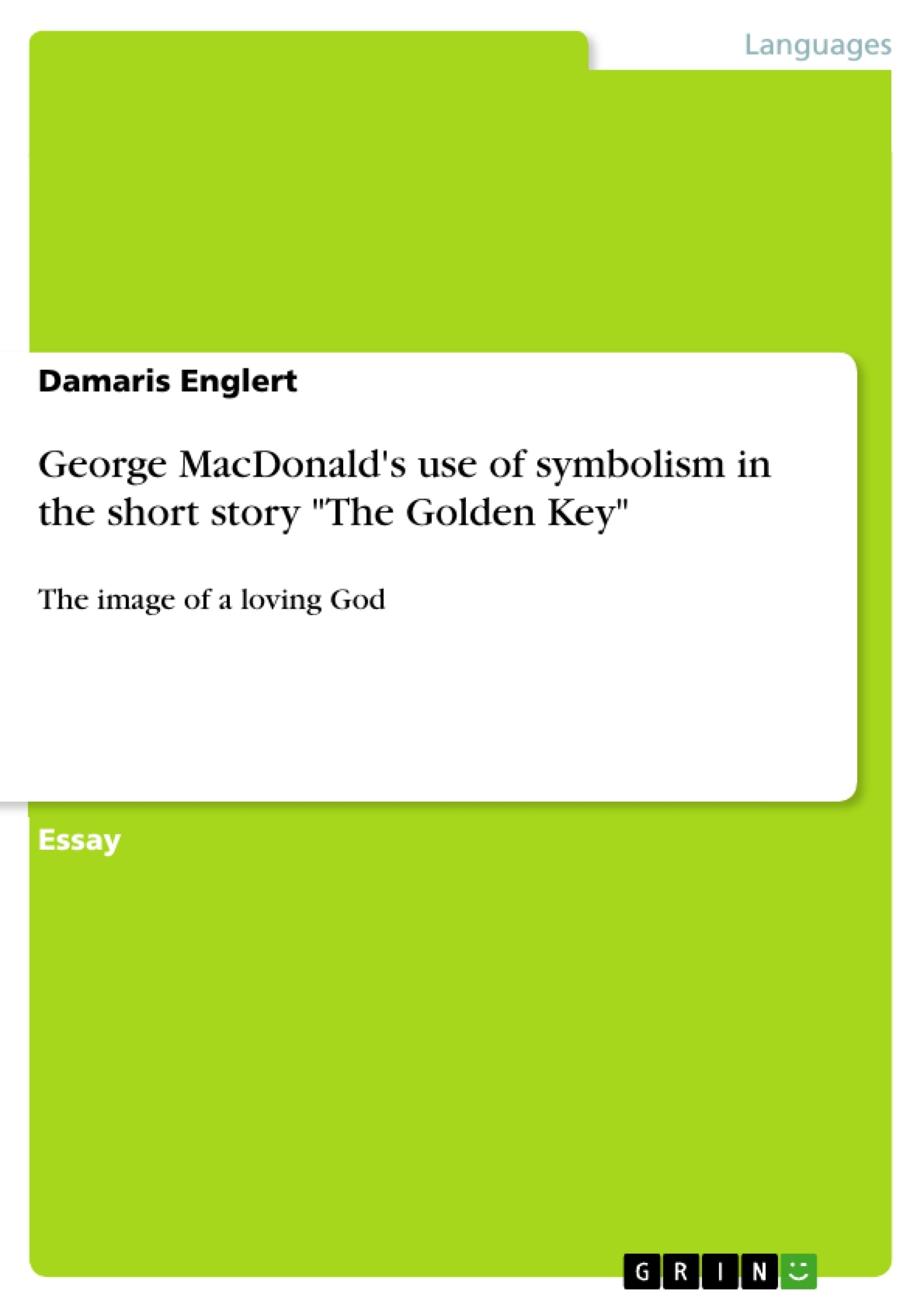The image of a loving God George MacDonald’s popular short story “The Golden Key” seems to be a story for children, but examining it more closely, it suddenly reveals itself to be much more than a fairy tale. George MacDonald does not only address children, he wants to reach the adults, outlining his vision of God that presents the exact opposite to the traditional Calvinistic theology of his time. In this essay I want to show how the author uses symbolism to illustrate a new though at the same time old concept of God – a God whose “love was over all and in all and covered all” (Phillips 1987, 139). By interpreting the use of symbolism in “The Golden Key”, I will point out this image of a loving God which shines through the whole story and which is the author’s message.
Inhaltsverzeichnis (Table of Contents)
- The image of a loving God
- The Golden Key as a symbol for Christ
- The Air-Fish as a symbol for death and resurrection
- The Three Old Men as a symbol of God's nature
- The Old Man of the Sea as a symbol of death
- The Old Man of the Fire as a symbol of God
- Silence as a symbol of the unspeakable beauty of God
- Moss as a symbol of God's humility
- Depth as a symbol of the journey to God
Zielsetzung und Themenschwerpunkte (Objectives and Key Themes)
This essay aims to analyze the symbolism used by George MacDonald in his short story “The Golden Key” to illustrate his unique vision of God, contrasting with the prevalent Calvinistic theology of his time. It explores how the story presents a God whose love is all-encompassing and seeks to reach both children and adults.
- The nature of God as a loving and compassionate being.
- The concept of death as a transition to a better life.
- The importance of humility and selflessness in the divine.
- The journey of spiritual growth and enlightenment.
- The interplay of depth and height in the pursuit of the divine.
Zusammenfassung der Kapitel (Chapter Summaries)
The essay begins by introducing the central symbol of the story, the golden key, which represents Christ and guides the protagonist, Mossy, on his journey to heaven. It then explores the symbolic significance of the air-fish, which embodies death and resurrection, and how MacDonald challenges the Victorian fear of death by presenting it as a transition to a better life.
The essay further delves into the symbolism of the three Old Men, each representing a different aspect of God's nature. The Old Man of the Sea represents death, while the Old Man of the Fire embodies God's purity, power, and love. The essay also examines the motif of silence, which symbolizes the unspeakable beauty of God and the limitations of language to express the profound truths of the divine.
Finally, the essay explores the central symbol of moss, which represents God's humility and his descent to earth to encounter humankind. It also examines the theme of depth, which symbolizes the journey to God and the gradual descent into the depths of the earth as a metaphor for spiritual growth and enlightenment.
Schlüsselwörter (Keywords)
This essay explores the use of symbolism in George MacDonald's “The Golden Key” to portray a loving God, contrasting with the prevailing Calvinistic theology of his time. It examines key themes such as death and resurrection, humility and selflessness, the journey of spiritual growth, and the interplay of depth and height in the pursuit of the divine. The essay analyzes symbols like the golden key, the air-fish, the three Old Men, silence, and moss, highlighting their role in shaping MacDonald's unique vision of God.
- Citation du texte
- B.A. Damaris Englert (Auteur), 2009, George MacDonald's use of symbolism in the short story "The Golden Key", Munich, GRIN Verlag, https://www.grin.com/document/152129




